10 Iconic Animals Of South Africa
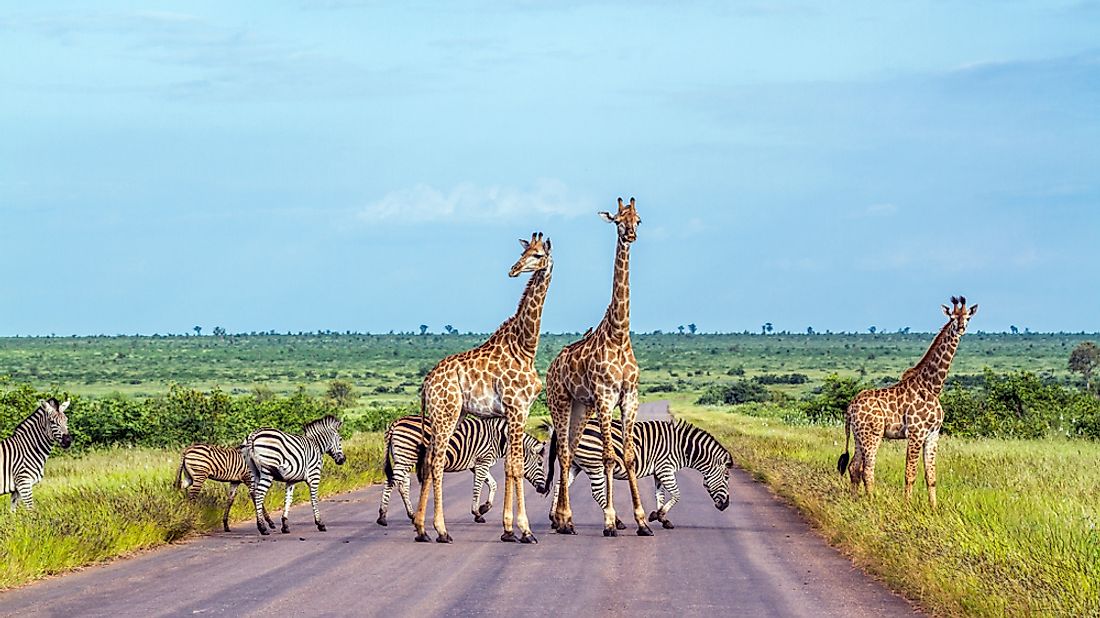
From the Big Five to the charismatic penguins, South Africa is home to a variety of wildlife. It has approximately 300 species of mammals and 850 species of birds. The bushveld and savanna regions of South Africa are homes to large numbers of wildlife. Kruger National Park hosts some of the known mammals like elephants, buffalos, rhinos, and cats. The country is also home to some of the lesser known animals like the tsessebe and suni. Here are some of the animals native to South Africa.
Tsessebe
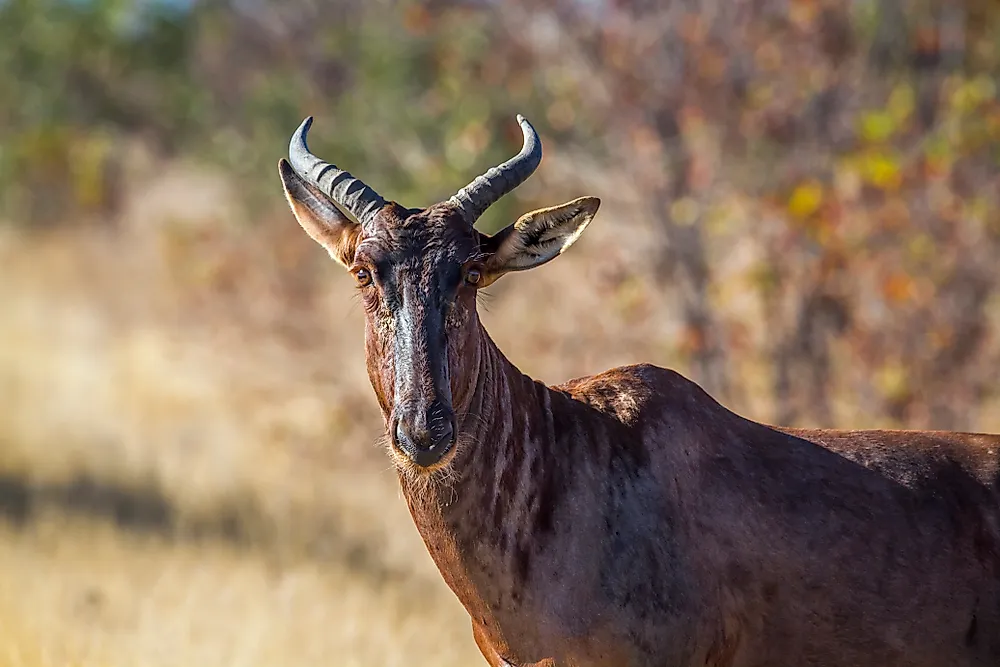
The tsessebe is a subspecies of Africa antelope and closely related to topi. Apart from South Africa, tsessebe is also found in Angola, Botswana, Namibia, Zimbabwe, Zambia, and Swaziland. It is the fastest antelope in Africa and can attain a speed of up to 90 km/h. The adult tsessebe is 150-230 cm long. The male weighs 137 kg while the female weighs 120 kg. In males, the horns can be as long as 40 cm and are mainly used in defending a territory and for mate attraction. Their bodies are covered by chestnut brown coat while the tail tuft and front faces are black. The tsessebe can live up to a maximum of 15 years and mainly graze on grassland and open plains.
Rhino
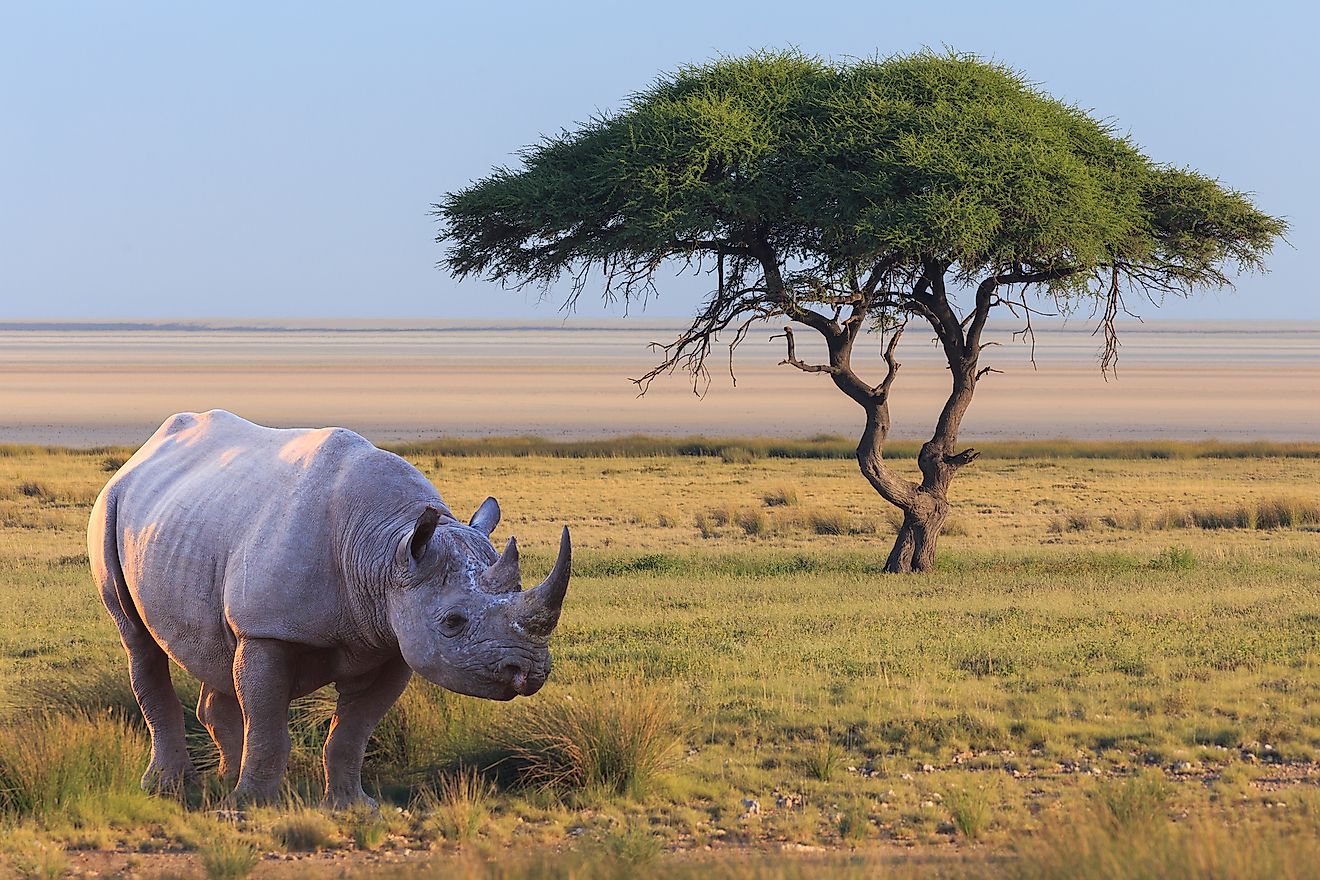
Rhinos are large, stocky animals commonly known for their short legs and two horns on their muzzle with the longer horn sitting at the front of the nose. South Africa is home to over 80% of the world’s rhino population. The two species found in the country are the white and black rhinos. The rhinos are contained in protected areas such as Kruger National Park. Two of the four subspecies of black rhinos found in South Africa are the South-central and South-western species. White rhinos are the second largest mammals after elephants while black rhinos are relatively smaller than their relatives. The major threat to the South African rhinos is extensive poaching.
Cape buffalo
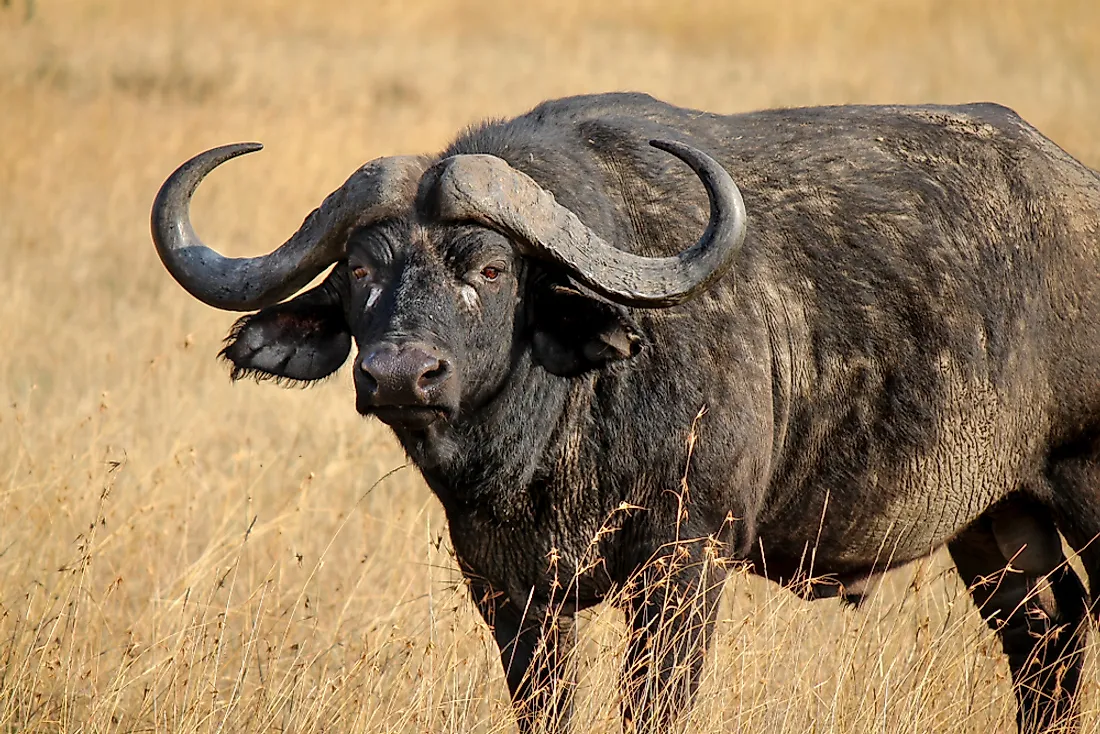
The Cape buffalo, also known as the African buffalo, is a subspecies of buffalo commonly found in Eastern and Southern Africa. The buffalo is unpredictable and highly dangerous to humans with several deaths reported around their habitat. It is a large bovine with a shoulder height ranging from 3.3-5.6 feet. The head-to-body length can be as long as 1.2 feet. A mature buffalo weighs 1,100-2,200 pounds. It has a black or brown coat. Some females have a reddish coat. Cape buffalo’s main predator is the lion. A single buffalo can only be brought down by several lions.
Puff adder
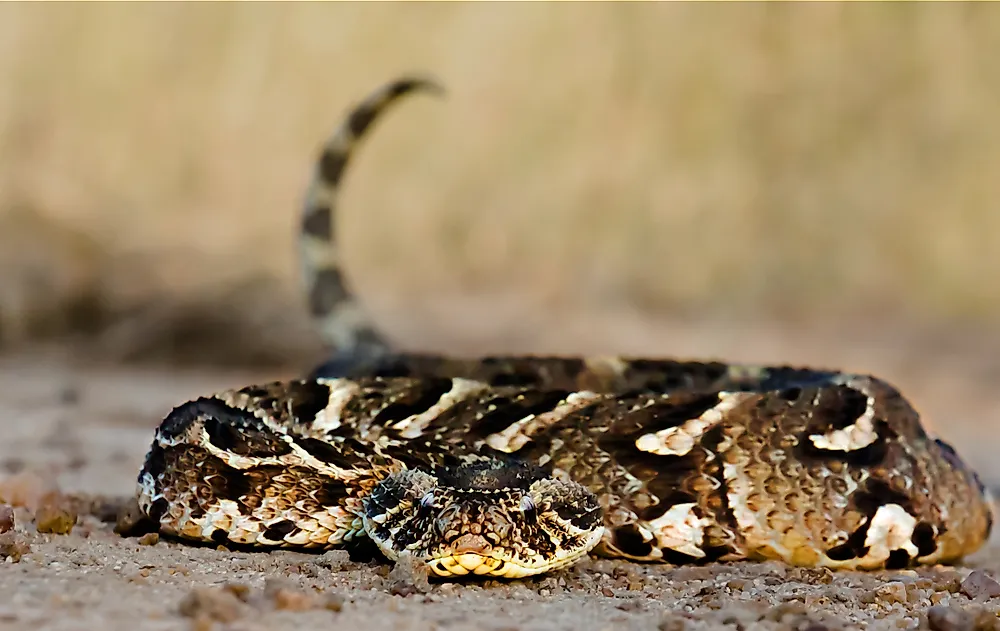
The puff adder is a venomous viper species common throughout Africa except in the Sahara Desert and rainforest region. The snake is responsible for most of the snake-bite deaths in Africa owing to its wide distribution and the aggressiveness. The puff adder averages 39.3 inches in length and weighs over 13.2 pounds. Males are large and have longer tails than the female. Their color patterns vary. The color ranges from yellow to orange, to light brown, to reddish brown. The puff adder relies on camouflage for protection. Although they are terrestrial, they can swim as well. They prey on birds, lizards, and mammals.
Cheetah
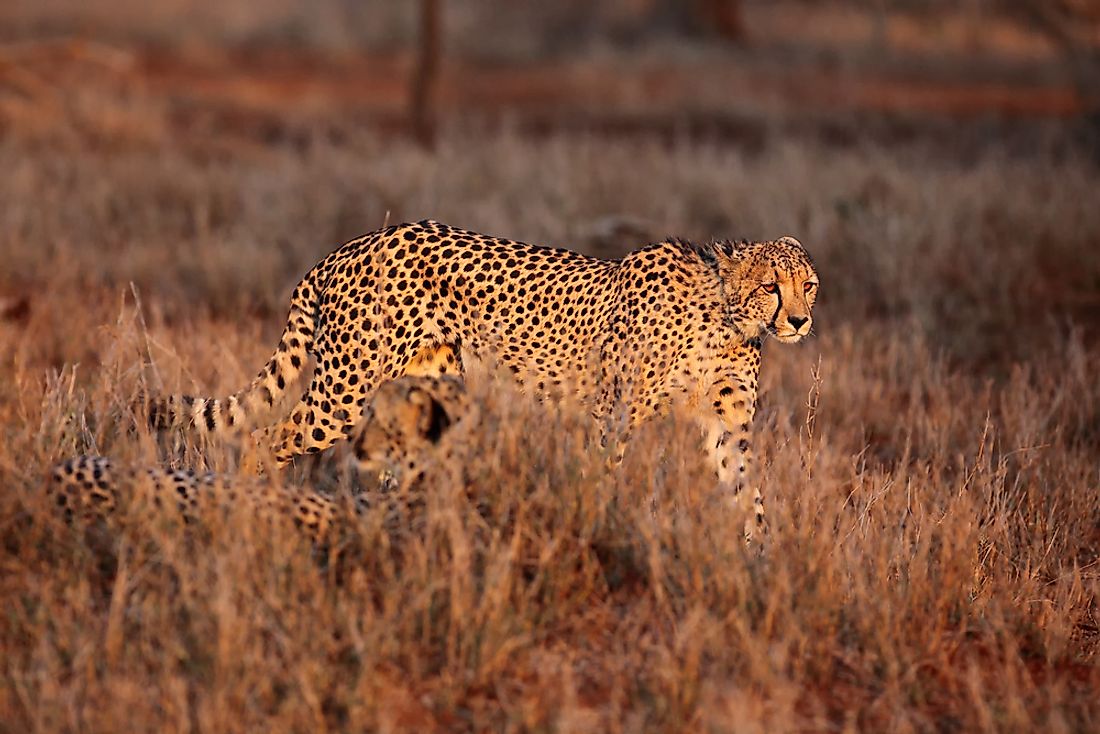
Cheetahs belong to the cat family and are found mainly in East, North, and Southern Africa. It has been listed as Vulnerable by the IUCN due to the substantial decline in its range. The cheetah is the fastest land animal and can attain a speed of 70 mph. It has a slender body and a deep chest with the body covered by a spotted coat. The head is small and rounded and the legs are also small. The tail is long and spotted. Cheetahs can be as long as 28-35 inches at the shoulder and can weigh 46-156 pounds. Cheetahs are mainly active during the day with hunting as the main activity.
Giraffe
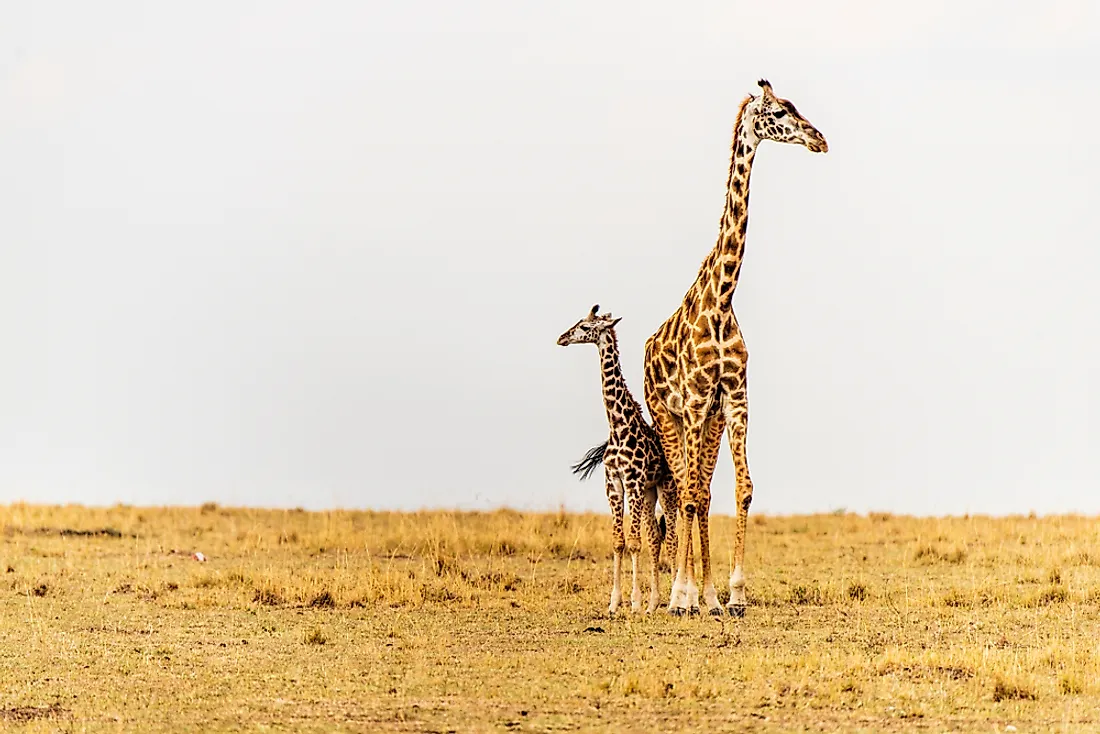
The giraffe is the world's tallest terrestrial animal. Its distinguishing feature is the extremely long neck and legs and the distinctive coat patterns. Giraffe’s range extends from Chad to South Africa and is usually found in Savannah and woodland regions. It feeds on fruits, leaves, and flowers. An adult giraffe is 14.1-18.7 feet tall and weighs approximately 2,628 pounds. Despite the long legs and neck, it has a small body. A horn-like structure known as ossicones. The ossicones are necessary for thermoregulation and also used as a combat between the males.
Gemsbok
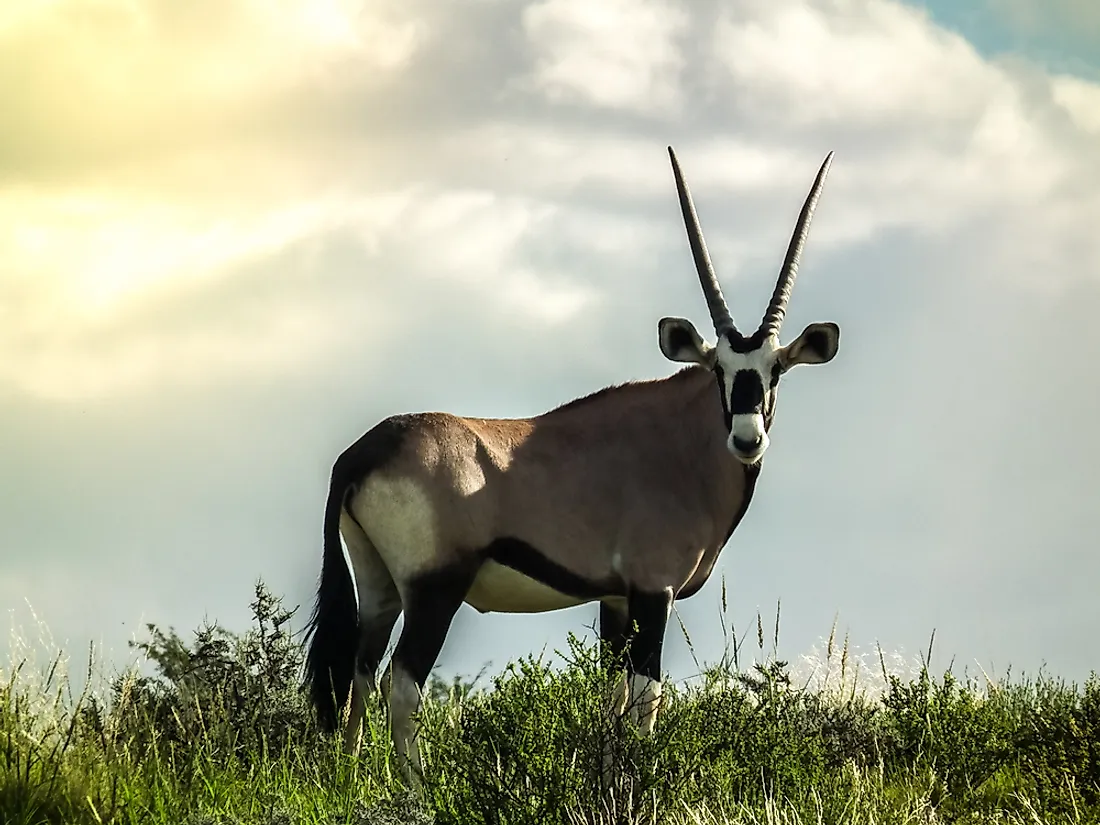
The gemsbok, also known as South African oryx, is a species of antelope that inhabits the arid areas of Southern Africa. It is depicted on the coat of arm of Namibia where its current population is approximately 370,000. The gemsbok has a light-brownish gray coat with patches towards the bottom of the rump. The tail is long and black in color. It has a blackish stripe that extends from the chin to the lower part of the neck. An adult antelope stands at 3.9 feet at the shoulder while the body length varies from 75 to 94 inches. It has long horns that are about 33 inches. Gemsboks are grazers but also browse during the dry season.
Elephant
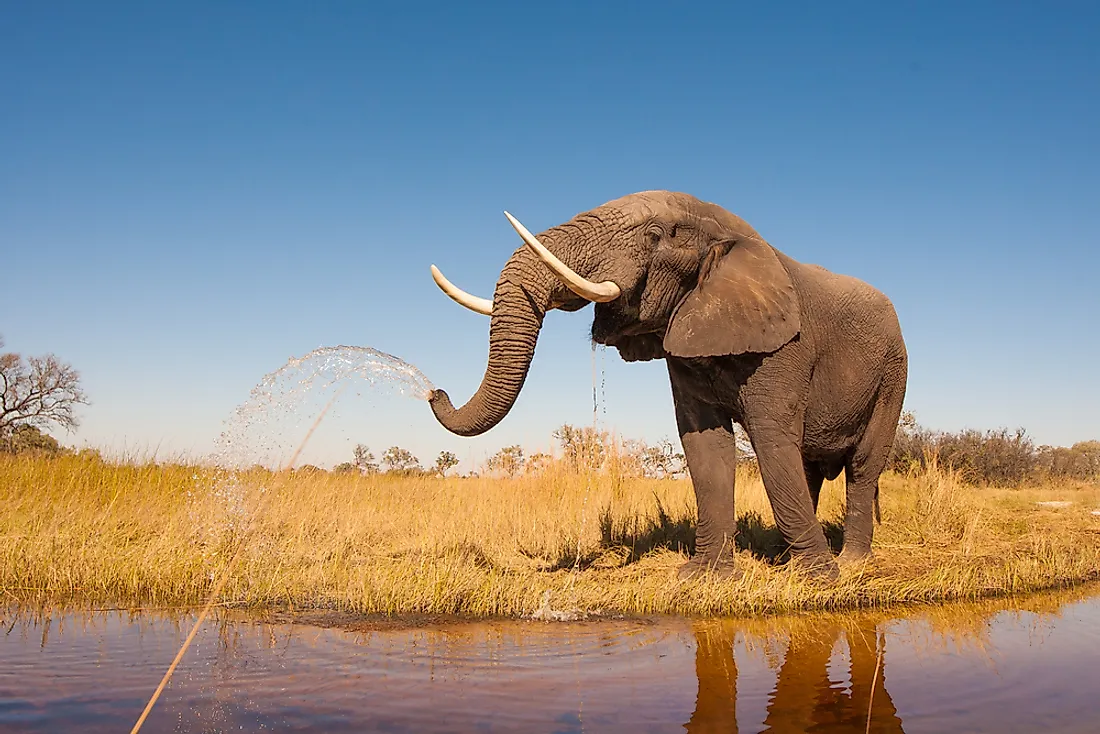
Elephants are among the largest terrestrial animals in the world. Impressive in stature and size, they can grow up to 11 feet and weigh 3.5-6.5 tons. In South Africa, elephants can be found in several of the protected areas including Kruger National Park, Addo Elephant Park, and Knysna Elephant Park where visitors are allowed to take pictures with them. They have several distinctive features including the long trunk (proboscis) that is used for both breathing and grasping objects. The tusks are used for protection and a tool for digging. The large ear flaps are used to regulate the body temperature. Elephants are purely herbivorous and prefer to stay near water.
Lion
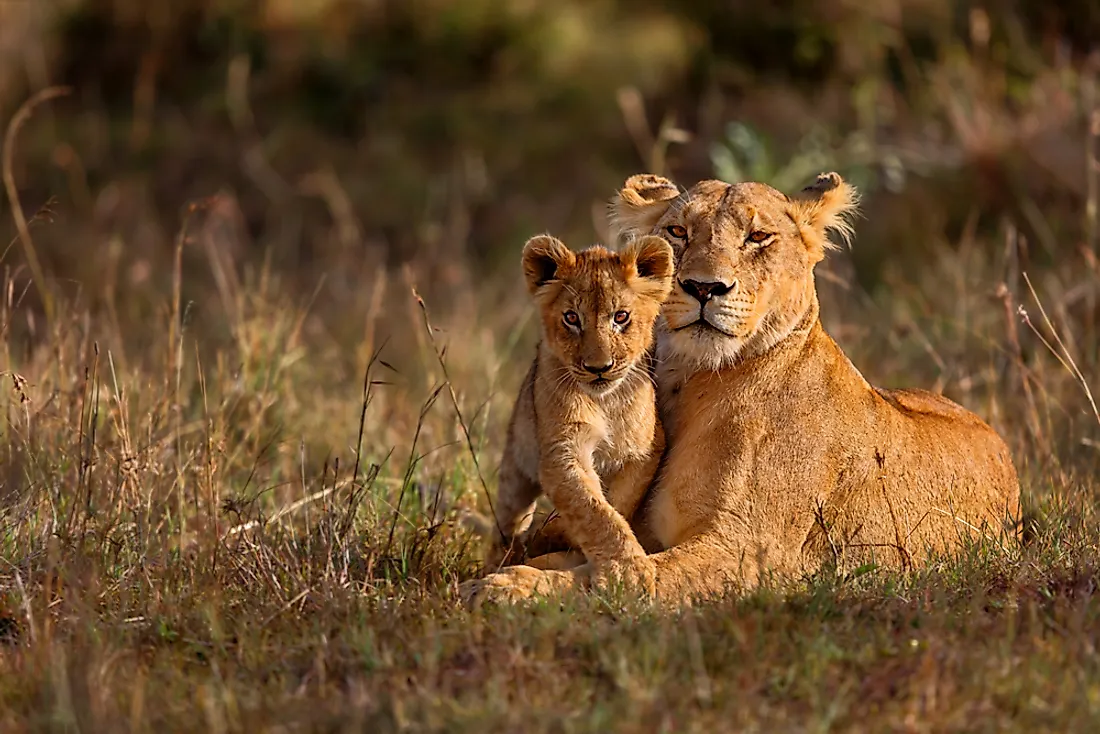
Lions are one of the Big Five animals. They are the largest members of the feline family and mainly inhabit the woodlands, savannah, and grasslands across Africa. Lions are one of Africa’s apex predators with no other animals preying on them. Of all the big cats, lions are the only ones that live together in groups. A group consists of 15-30 members with the females hunting for food and the males protecting the pride. The males have prominent manes that grow around the neck, shoulder, and covers part of the head. Lions hunt in groups with its prey consisting mainly of mammals.
Greater kudu bull
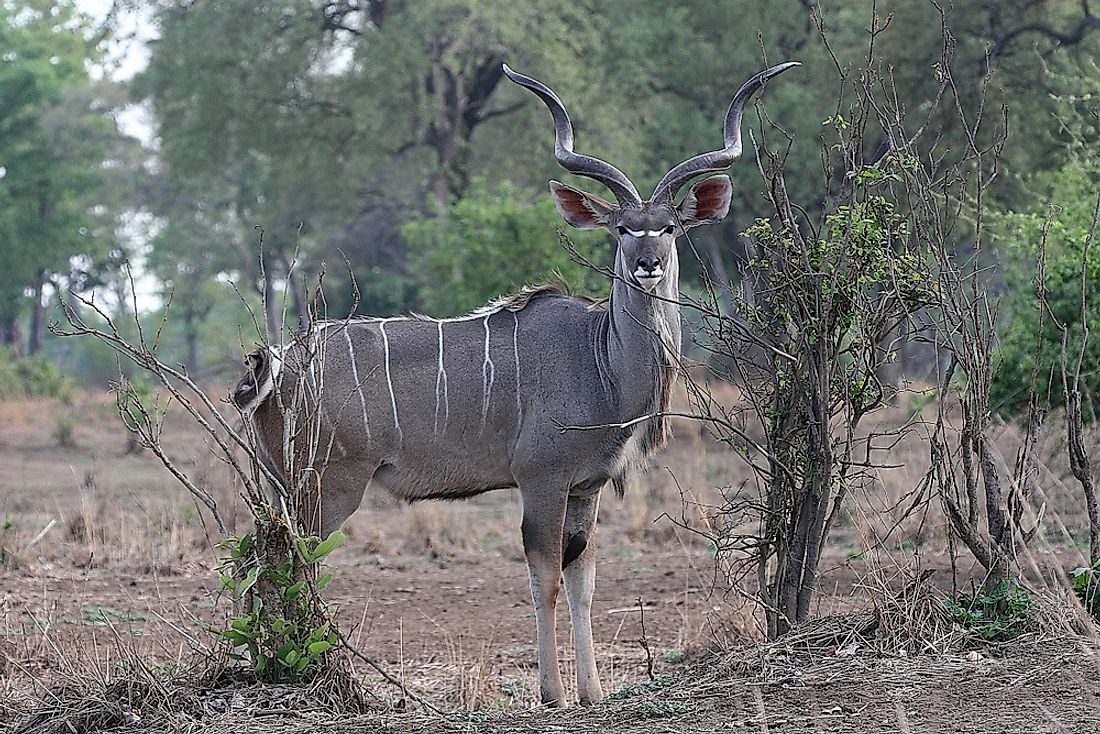
The greater kudu bull is an antelope species commonly found in woodlands across eastern and southern Africa. Despite the wide range, the antelopes are sparsely populated in some of the areas due to habitat loss and poaching. The greater kudu has a narrow body, long legs, and a brownish gray to reddish brown coat. It has 4-12 white stripes along the torso with the head darker in color than the rest of the body. The bulls (male) are larger than the cows (female) with the males having large manes that run along their throat.











